Eric C. Sheninger's Blog, page 17
January 23, 2022
Supporting and Rewarding Teachers with Time
If it’s true that life is a test, then the COVID-19 pandemic represents the most challenging one education and everyone in the field has ever faced. The impacts are far and wide. Not a single person is unaffected, and everyone needs help in some form or another. However, one group, in particular, stands out as they are on the front lines every day working with kids – our teachers. I don’t have to go into specifics as they are well known, but many of the issues include quarantined students, skeleton classes, concurrent teaching, covering classes, abrupt shifts to remote or hybrid learning, increasing demands, and personal exposure to the virus. As a result, the workload and stress just keep piling up. If something is not done and soon, I fear, as many others do, that there will be a mass exodus from the profession.
As someone who is in schools on a weekly basis and working side by side with educators under these conditions, I always ask what could be done to make their professional lives a little bit easier. The response is always the same no matter where I am in the country, and that is time. Some might say that this is easier said than done. Still, districts across the country have made innovative changes to the school calendar and amended contracts to provide uninterrupted time to plan and collaborate. That means no meetings, phone calls, emails, or mandated professional development. However, professional learning support is also imperative, and there are other time-sensitive strategies that can be implemented. Below are some ideas broken up into two categories:If we burn out teachers our education system will never meet the needs of learners. This, in turn, will dramatically impact society and not in a good way. They are people and have limits.
— Eric Sheninger (@E_Sheninger) January 19, 2022

Uninterrupted Time
One day per month for planning and collaboration (no kids in school): I have seen more and more school districts moving to this model, which has been celebrated by teachers, administrators, support staff, and students.Half-day per month for Professional Learning Communities (PLCs): We took this route in my former district, where I was a principal. We don’t want PLCs to become “just another thing” teachers have to do. By providing time, they inherently become more powerful and something that is valued. On a side note – administrators should be in their own functioning PLC as a way to model. Extend holiday breaks for mental health: I have seen a few superintendents across the country take this route resulting in a win-win scenario.Time for Professional Learning
Add professional learning days: My opinion is that it is best to frontload these at the beginning of the school year to alleviate distraction and pressure. Another idea is to build in back-to-back professional learning days during the school year so concepts and strategies can be explored in more detail. Job-embedded coaching: Teachers want to grow and improve but pulling them from their classes and trying to find subs or coverage creates additional headaches. Job-embedded and ongoing professional learning support uses the time that is already in the schedule to provide needed growth opportunities. This model uses staff meetings, team time, and non-instructional duty periods to facilitate targeted sessions on strategies that can be implemented immediately. Additionally, by observing classes and PLC meetings, valuable feedback can be provided either synchronously or asynchronously. All of my coaching cycles aligned to longitudinal work with schools worldwide involve this approach. Asynchronous modules: There is no better way, in my opinion, to align current context to sound pedagogy than developing personalized options for teachers to engage in at their own pace. Scaling professional learning is hard. It is even more challenging during a pandemic. I recently coached John Orcutt, the principal of Arlington High School in New York, on creating an asynchronous course on personalized learning in Google Classroom. It came out great! Now teachers and administrators can work through the activities at their own pace, apply them to their practice, and receive professional learning hours. Since I am in the district once a month supporting schools, I will be providing targeted coaching and feedback to everyone who has taken the course.Please note that these are only suggestions, but each has been successfully implemented in a district or school. Changes to the school calendar and, in some cases, staff contracts have to be made. In collective bargaining situations, a compromise must be reached. Where there is a will, there is a way. Teachers have earned the attempt to at least try.
January 16, 2022
5 Ways to Unleash Your Leadership Potential
Leading is not easy. I am a believer that leaders are not born but instead develop over time based on both the environment and learned experiences. No matter where you are on your journey, there is the opportunity to grow and evolve. Your potential is not set in stone. It can be unleashed by being cognizant about where you currently are and taking the necessary steps to get to where you want, and others need you, to be. Here are five ways to unleash your potential now and beyond.
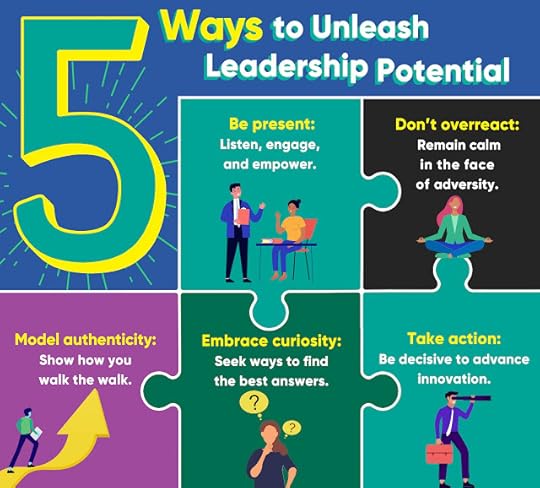
Be present
People by nature are very distracted creatures, and it has only gotten worse over the years. Keeping one’s attention in the digital age can be an arduous task. Just watch people in public places for a few minutes, and you will see countless individuals glued to their devices. Social media and constant connectivity have evolved into both a blessing and a curse. While you might not be able to control the actions of others fully, you can work to ensure that you are fully present during conversations, meetings, and professional learning events. Listen intently when warranted, ask questions, avoid interrupting, use non-verbal language, and most importantly, stay off your devices. An engaged leader is one who empowers.
Don’t overreact
Emotions are often hard to control. I know that I, like many others, grapple with how to hold them in check. Losing your cool can alienate the people who are closest to you while also raising questions about your ability to lead. The fact is that things will go wrong no matter how much you prepare. A well-thought-out action plan will never prevent emergencies or rogue personalities from chaos every now and again. Even though it is easier said than done, try to remain composed and not overact when something does not go your way. The job of a leader is to help others remain calm in the face of adversity.
Model authenticity
People can sniff out those who are fake in both intentions and actions. The same can be said when weaknesses are continuously masked with excuses. Authentic leaders not only talk the talk but strive to walk the walk. I shared the following a few years back:
Be true to yourself and others. When you fail (and you will), showcasing your learning side will only help to strengthen the bonds with those you work with. Being human is more important than being right all the time. You will never have all the answers or solutions needed to move large change efforts forward. Look to others to find answers to questions and help you achieve your change goals. Continue to improve in ways that push you outside your comfort zone. With authenticity on your side, finding success will be much easier.
In a world where exponential advances in technology are the norm, there is nothing more authentic than being a digital leader.
Embrace curiosity
There are certain truths when it comes to leadership. Not a single person has all the solutions or even the best answer to many situations. There is immense power when a leader acknowledges that they don’t know. It’s not always about being right or wrong but instead seeking out ways to make the best decisions for the people you serve. Curious leaders inspire while also breaking down traditional barriers when it comes to transforming culture. Francesca Gino shared the following after exploring research on the topic:
When curiosity is triggered, we are less likely to fall prey to confirmation bias (looking for information that supports our beliefs rather than for evidence suggesting we are wrong) and stereotyping people (making broad judgments, such as that women or minorities don’t make good leaders). Curiosity has these positive effects because it leads us to generate alternatives.
Curiosity fuels a more collaborative and vulnerable approach that works to empower others to join the cause.
Take action
Passiveness rarely leads to change and can negatively impact when it comes to motivating the masses. While there are certainly times for consensus, sitting on one’s laurels when crucial decisions need to be made is something that many people often complain about when it comes to their leaders. Navigating the change process and ushering in innovative practices requires decisiveness. As I stated in Digital Leadership, the desire and drive to act is all that matters. When it is all said and done, leadership is about action, not position, title, or power.
Your potential is not set in stone. In the words of Ralph Waldo Emerson, “The only person you are destined to become is the person you decide to be.”
January 9, 2022
Tips for an Abrupt Shift to Remote or Hybrid Learning
The other day I was with one of my partner districts as part of ongoing longitudinal work that will last at least two years. As I was facilitating a model lesson near the end of the school day with a group of teachers and administrators, a staff member came by the room to inform everyone that the district would be going remote the rest of the week. An email was also sent informing all educators to plan for an asynchronous day of learning on Thursday and synchronous on Friday. Naturally, I ended the session a little early so they could begin to map out the rest of the week, but I also had planning to do in terms of converting my face-to-face sessions with the leadership team to virtual that was scheduled for the next day.
Unfortunately, what I have described above has become quite common as of late. COVID-19 has roared back with the highly transmissible Omicron variant resulting in scaled disruption. Schools are having immense trouble staffing their buildings or even getting kids to school as bus drivers must go out on quarantine. In this case, the result has been an abrupt shift to remote learning. The other scenario that has panned out has been many children succumbing to the virus and being quarantined or families keeping their kids home as a safety measure. In this scenario, a decision to move to hybrid learning has been made.
Undoubtedly, this is a very stressful time for educators, but their resilience and flexibility have, and continue to, shine through to make things work. Remember, we have been here before, and there is no need to reinvent the wheel. I have been going back through some of my most-read posts ever, and many of them are on the topics of remote and hybrid learning. You can access all these curated on a Pinterest board HERE. Below are some straightforward tips that will help you get through this without losing your mind:
Adapt what you already have planned (don't reinvent the wheel)Update your learning management pages (LMS) such as Canvas, Schoology, or Google Classroom so kids can seamlessly access all assignments and tasksUse breakout rooms in replacement of face-to-face discourse activities Integrate digital tools to increase engagement and empower learnersLeverage personalized strategies for asynchronous work such as choice boards, must-do/may-do, playlists, and flipped lessons.Be realistic (substance over quantity, prioritize standards)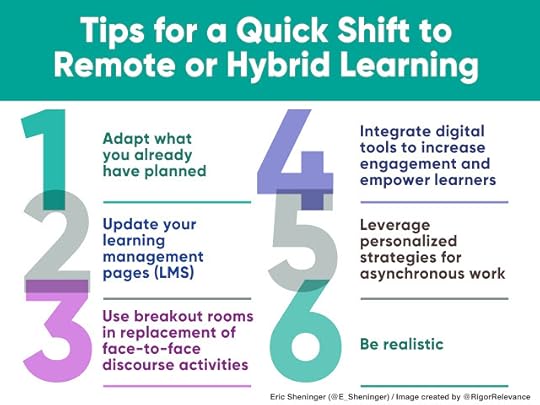
There is nothing inherently new in the tips provided above. The key is to remember pivotal lessons learned during the great remote and hybrid experiment of 2020 and parts of 2021 to power through what I hope is only a couple of weeks. Effective leadership in these unpredictable times is not only needed but greatly appreciated. Finding additional resources for staff and freeing up time to plan are two quick wins that won’t go unnoticed. Together, you’ve got this, and if there is anything I can do, please don’t hesitate to reach out (esheninger@gmail.com).
January 2, 2022
Hitting Curveballs
If only everything could be simple. Life is anything but an easy journey. While this, for the most part, has been manageable in the past, the pandemic has upended professional and personal lives. Just when there is a glimmer of light at the end of the tunnel, a new variant materializes. For now, Omicron is the current curveball. As I write this post on the first day of 2022, I can't help but reflect on the resilience educators showed the year before. They stepped up to the plate every time for kids and each other because that is in their DNA. As the curveballs kept coming, they hit them. In the midst of immense adversity, they persevered.

What the future holds, no one can know for sure. Many schools have or will be making the decision to revert back to some form of remote learning. While this can be frustrating and challenging, educators have been here before. The silver lining is that lessons learned in the past can be leveraged to make it a smoother process. There were many successes when it comes to remote learning that have value now and will for years to come. I made sure to capture these in chapter 6 of Disruptive Thinking in Our Classrooms. Good teaching and leadership shine through no matter the circumstance. If you are in need of remote learning resources I have you covered. Just click HERE.
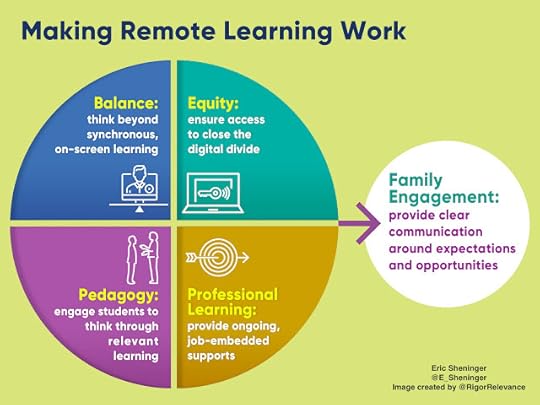
For schools that do not go back to remote learning, the curveball will be high rates of absenteeism. In the case of students being out, we will most likely see hybrid learning come back into the picture. Just like in the case of remote learning, educators have been there and done that to ensure learning continues. Throughout the pandemic, I captured successful hybrid learning strategies from the schools where I was coaching on the topic. You can access those HERE.
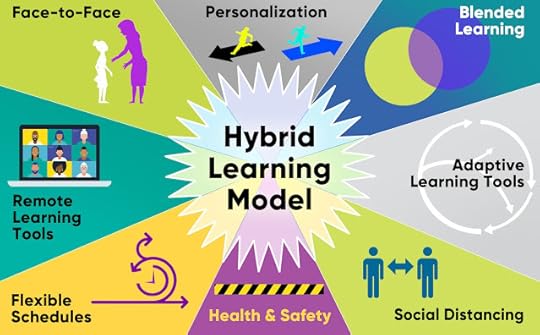
Another curveball comes in the form of the emotional and physical impact on educators. While they valiantly and selflessly continue to serve students, the pandemic has taken its toll on them. I shared the following in a previous post:
Educators are also in desperate need of social and emotional support. Many teachers are at their wit's end, and who could blame them. Morale and mental health are suffering as board meetings spiral out of control, and the pandemic rages on. Administrators can lessen staff load by offering mental health days, covering classes, getting rid of meetings, providing grading grace periods, and eliminating non-instructional duties. Grace and empathy can be shown through electronic polling to see what they need. Bigger lifts include finding ways to add additional time for planning or securing outside counseling services.
We cannot ignore the other educators who need social and emotional support, including counselors, coaches, instructional aides, administrators, or anyone else who serves students. While they are typically more behind the scenes, some are suffering as well. Here is where Central Office, boards of education, families, and community members can step up. Extending breaks, thank you cards, substituting, or food items can go a long way to help all educators cope a little bit better.
A systematic approach employ's a Maslow's before everything else lens. If we don't take care of all of our people – students, teachers, support staff, administrators – our education system could be damaged in ways that will be felt for generations.
With 2021 in the rear mirror, one can only be more hopeful for the year ahead. There will be curveballs, but educators will keep hitting them.
December 26, 2021
Top Posts of 2021
With 2020 in the rearview mirror, the consensus was that 2021 would be a much smoother ride. Most people would agree that this was not the case. During countless coaching visits, I saw and heard firsthand the myriad of challenges being faced in classrooms, schools, and districts. Through it all, though, educators found a way to forge ahead in the midst of adversity. It sure wasn’t an easy path, but the resilience, dedication, and determination of people who have committed their lives to serve children of all ages have and continue to be on display. I, for one, cannot thank them enough for the sacrifices made and the resulting impact on kids.
Writing this past year has been bittersweet for me. On the one hand, I continually empathized with educators as the struggle was, and continues to be, very real. It is difficult to honestly know this feeling if you are just up on a stage and not in classrooms or buildings. Context matters, especially when doling out advice. On the flip side, I have witnessed some of the most extraordinary practices that have been implemented with fidelity. This is no small feat considering the environment that a pandemic had and continues to create. Through a coaching lens, I was able to generate topics for posts that I thought people would find value in and appreciate. Writing provides me with an avenue to both reflect on my practice and celebrate that of others.
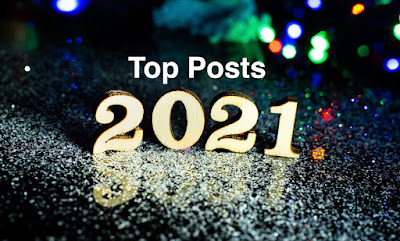
Speaking of celebrations, I had one on a personal level with the publishing of my latest book in April. Disruptive Thinking in Our Classrooms was one of my major pandemic projects, alongside with becoming a master at cooking charbroiled Gulf of Mexico oysters on the grill. Since the book became available, I used this blog to create supplemental content while expanding on many of the concepts with additional insight. All of these posts and accompanying original images have been curated on Pinterest. In addition to these resources, there is also a comprehensive study guide and an impressive bulk order discount through ConnectEDD Publishing (email info@connecteddpublishing.com).
Without further ado, here are my most popular posts of 2021 in no particular order. Instead of sharing a summary of each, I have decided to include the unique image that was developed to accompany the content.
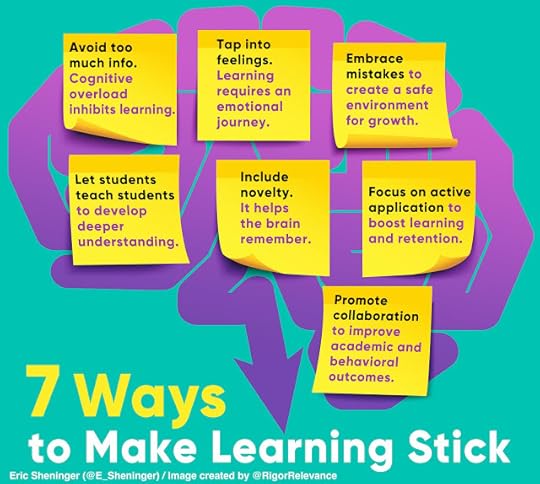
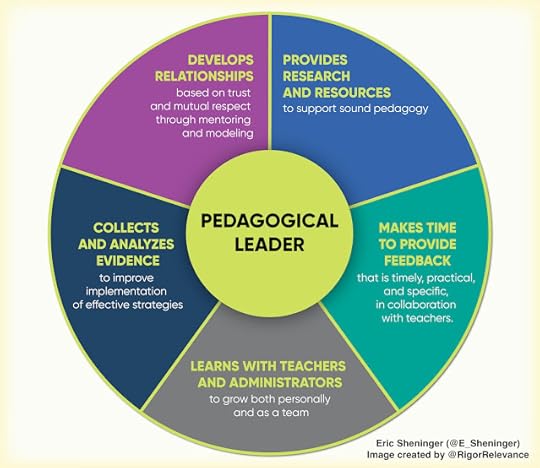
8 Elements of Effective Coaching
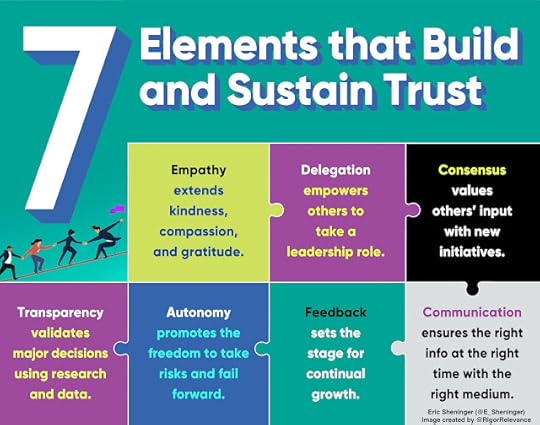
Learning Recovery Through Acceleration
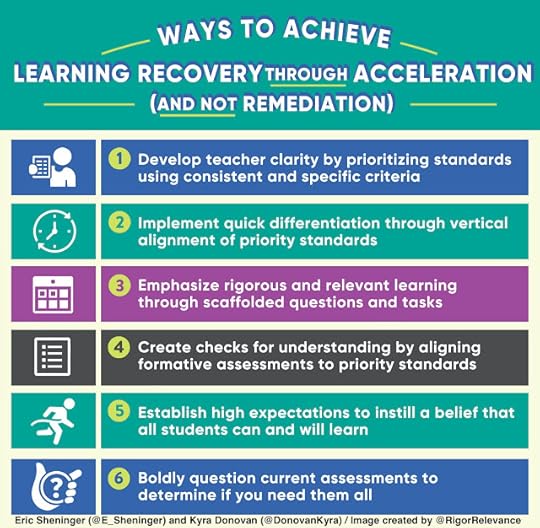
Making Headway with Remote and Hybrid Learning
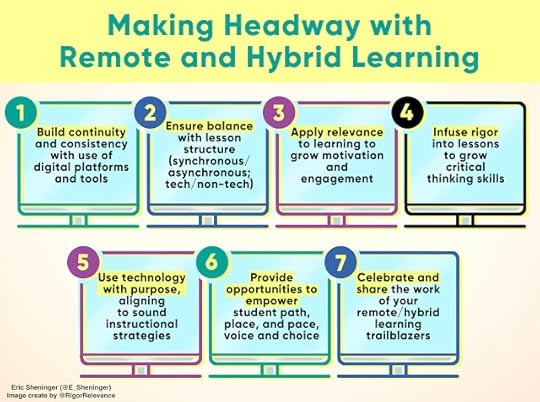
Thanks for all you do, and wishing everyone the best in 2022!
December 19, 2021
A Systematic Approach to Social and Emotional Support
It goes without saying that the COVID-19 pandemic has wreaked havoc on youth across the world. While learning recovery remains a needed area of focus, virtually every educator I come in contact with explains that students are a year or two behind socially. In some cases, the extended time at home during remote or hybrid learning has led to the development of concerning behaviors that weren’t prevalent at scale in the past. All of this has led to a dramatic increase in discipline issues and a significant amount of time having to be spent on classroom management and establishing routines. It is frustrating for teachers and administrators alike.
To make matters even more complicated, the emotions of students are all over the place. These stem from a variety of factors, including isolation, excessive time on social media, watching parents struggle financially, and the impact of the virus on the health of family members. Uncontrolled or unchecked emotions lead to negative impacts on learning. It’s tough to learn, let alone concentrate if the mind is being pulled in numerous directions. The combined social and emotional hurdles are making a challenging year even more difficult. Truth be told, this isn’t an issue that is only impacting kids. Efforts need to be made, and an array of supports offered to ensure the well-being of staff, especially those on the front lines who are in direct contact with students daily.
Let’s start with students. For SEL to be more than a buzzword or fad, it needs to be embedded into school culture. A focus is excellent, but it’s the actions that truly matter. To begin, a relational foundation has to be established. Here is a quote I shared in Disruptive Thinking in Our Schools:
“It all comes down to relationships. Without trust, there is no relationship. Without relationships, no real learning occurs.”
If we want to get students to open up to us, then efforts need to be made to build their trust. While this is important, it is also critical to embrace a practice strategy to identify, monitor, and support kids dealing with social and emotional issues impacting their learning and that of their peers. My colleague Venola Mason developed a practical approach called Pause & React. Here are some of her thoughts:
What I’ve noticed in classrooms across the country is that educators are using the first days and weeks of school to build relationships and connect with students. However, as the school year progresses and more attention is paid to academic content, there is less of an emphasis placed on maintaining these critical relationships. Oftentimes, students who experience trauma or other difficulties are overlooked until their situation becomes very severe, leaving teachers unsure of how to turn things around. What I arrived at to help address this need is a practical and straightforward resource for approaching relationship-building—a tool I call, PAUSE & REACT. It’s meant to be simple—not another thing to add to a teacher’s plate, but an intuitive and structured way to leverage and strengthen relationships with students.
Be sure to check out this article that outlines the specifics behind Venola’s Pause & React tool.

SEL has become an embedded coaching component in my own work with districts and schools. Teachers and administrators are in need of practical strategies that can be easily implemented daily and across the curriculum. Below are some to consider:
Daily meeting: Many educators have heard of the Morning Meeting, where students engage in various SEL activities prior to the start of content-related lessons. I love this strategy but feel that it should rotate throughout the day, so it isn’t occurring during the same time or period each day.
Lesson planning/activities: While Daily Meeting is a great start, SEL should be emphasized across the curriculum. HERE are some great ideas from the HMH Shaped blog.
Digital surveys – During a recent coaching visit with the Juab School district, I saw a teacher begin the day with a digital survey that included the following: How are you feeling today? Why do you feel that way? Do you need to conference with the teacher? While the rest of the class worked on a choice STEAM activity, the teacher conferenced with those kids who needed non-academic support. This is a great strategy that can be implemented in classrooms and across a school.
Personalized learning: Sound pedagogy can be the most proactive approach out there to meeting kids' social and emotional needs on a daily basis. In every personalized model, an opportunity for socialization or conferencing with the teacher can be included.
Family engagement: SEL should never be the sole responsibility of teachers. Consistent programs and outreach to families highlighting strategies and resources that can be used at home to identify and support students are paramount.
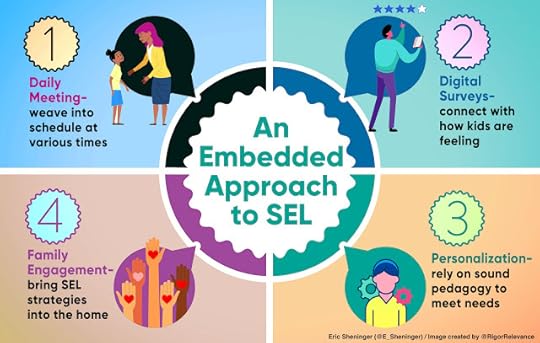
While students get most of the attention, educators are also in desperate need of social and emotional support. Many teachers are at their wit's end, and who could blame them. Sari Beth Rosenburg shared the following:
Teacher morale and mental health are suffering as school board meetings intensify and the pandemic rages on. They are facing renewed attacks on the very content that we teach while school shootings are becoming more frequent again after a respite during the pandemic. It should come as no surprise that teacher morale and mental health are suffering as a result. In fact, we are seeing a growing teacher shortage in America, bordering on a national crisis. It is crucial that we find ways to support teachers, especially as student mental health is also suffering as a result of the pandemic.
As someone who spends a great deal of time working side by side with teachers in schools, I couldn’t agree more. In a previous post, I outlined an array of detailed strategies that administrators can leverage to lessen staff load, including mental health days, covering classes, getting rid of meetings, grading grace periods, and eliminating non-instructional duties. Grace and empathy can be shown through electronic polling to see what they need. Bigger lifts included finding ways to add additional time for planning or securing outside counseling services. At this point, it is critical to consistently show you care no matter your role in education.
We cannot ignore the other educators who need social and emotional support, including counselors, coaches, instructional aides, administrators, or anyone else who serves students. While they are typically more behind the scenes, some are suffering as well. Here is where Central Office, boards of education, families, and community members can step up. Extending breaks, thank you cards, substituting, or food items can go a long way to help all educators cope a little bit better.
A systematic approach employ’s a Maslow’s before everything else lens. If we don’t take care of all of our people – students, teachers, support staff, administrators – our education system could be damaged in ways that will be felt for generations.
December 12, 2021
Unlocking the Potential of Students
What are you good at and why? I am sure a list of things comes to mind. Now think about how this list of items plays out in your daily life. We all have strengths, and a common reaction is to leverage these as much as possible. I see this a great deal in my work coaching leaders. While there are many approaches that have varying value depending on the situation, there is a natural tendency to stick with what one believes they are particularly strong. There is nothing inherently wrong with this per se, but by doing so, we run the risk of capping our potential when it comes to achieving goals and growing. Feedback and accountability for growth through a coaching cycle help to unlock strengths that we might never know existed.
Learners in our classrooms are no different. They all enter school at various grade levels with a perception of what they are strong at, which can cloud their ability to grow. The same can be said with perceived weaknesses that act as a limit on their capacity to learn. All kids have greatness hidden inside them. It is the job of an educator to help them find and unleash it so that they can find success in the classroom and beyond. There is no one best way to unlock potential. Below are some ideas to try in your classroom, school, or district.
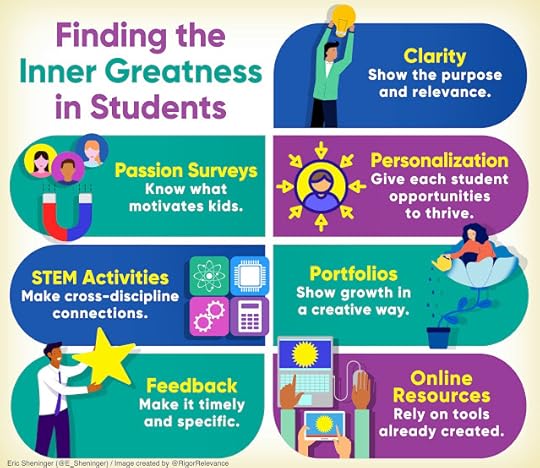
Clarity
Students want and deserve to know why they are learning something, how they will use what has been learned outside of school, and what tells them if they have successfully achieved the specified goal for the lesson, project, or assessment. If they are unclear about the purpose of the task or how time is being used, it becomes more challenging to empower them.
Passion surveys
Finding out what really motivates and inspires kids can be one of the best uses of time an educator or school engages in if the act sparks changes to practice. These passions can be integrated into daily lessons through anticipatory sets and projects or dedicated genius hours at the school level. They can also be leveraged to make changes to curriculum and course offerings.
Personalization
I have written a great deal on this topic and even included an entire chapter in Disruptive Thinking in Our Classrooms. These approaches focus on competencies such as time management and self-regulation to develop greater independence. Strategies such as station rotation, choice boards, playlists, and flipped lessons allow students who are already competent in the standard to move ahead and engage in more challenging and relevant activities. They also enable the teacher to work with those students who need more support, which sets the stage for their potential to be unlocked.
STEAM activities
Kids crave purposeful work grounded in interdisciplinary connections. When content is taught in isolation, a common outcome is students' lack of engagement, becoming either compliant or complacent. This inhibits potential. When developing lessons, activities, and courses, think about how they will connect science, technology, arts, and math.
Portfolios
Traditional assessments never tell the whole story and can mask what students actually know or can do. It is also common knowledge that not all kids respond to conventional summative assessments. Portfolios are a great way to measure the growth of time while also allowing creative freedom by demonstrating what has been learned.
Feedback
When it comes to unlocking the potential of all kids, feedback is a true gem when it is timely, practical, specific, and addresses progress towards a learning goal. It can also be used to challenge kids to unleash their creativity or push them outside of their comfort zone. How students analyze, discuss and act on feedback is as essential as the quality of the feedback itself.
Pertinent resources
While the strategies above take some planning to integrate effectively, educators can also harness an array of resources to assist with unlocking the potential of learners. I'm pleased to be partnering with Verizon to share a resource that I highly recommend - Verizon Innovative Learning HQ. The online portal offers an accessible, one-stop-shop of free resources such as AR/VR apps, immersive lesson plans, and professional development from Digital Promise. The sky is literally the limit while also saving precious time.
In the words of Joyce Meyer, "Potential is a priceless treasure, like gold. All of us have gold hidden within, but we have to dig to get it out." It's time to lend kids the tools to unearth theirs.
Sponsored post
December 5, 2021
Time is the Best Resource You Have
These are challenging times, and I cannot express my gratitude enough to dedicated and resilient educators who continue to show up for kids and each other. As someone who is in schools and classrooms on a weekly basis, I am tasked with validating the excellent practices taking place while also providing practical feedback for growth. During my coaching work, I almost always recommend to administrators that they poll their staff to see what support they need. Educator voice is critical and even more so now as people are burnt out and emotionally drained. It’s no shock that their number one response is time. I also hear this when I am facilitating targeted workshops. While this is undoubtedly important, it is also vital to gather input on professional learning and resources that are needed— more of this down the road.
There is only one thing a teacher can control, and that is how time is used when students are in class. While there is always an innate need for more, it behooves us to think about opportunities that already exist to improve lesson effectiveness while also meeting the unique needs of learners that lead to better outcomes. Personalized strategies such as station rotation, choice activities, playlists, and the flipped approach maximize the amount of time that is already available. Data is used to group, regroup, provide targeted instruction, pull individuals for intensive one-on-one support, and differentiate to especially help at-risk learners. These pedagogical techniques also naturally align with MTSS and RTI models, which you can read about in more detail HERE.
Now I know what some of you might be thinking. Personalized learning sounds great in theory, but from a practical standpoint, it takes some time to plan when implementing for the first time. I can’t argue with this point, but it is also a farce to say outright it can’t be done at all grade levels. Hence, the realist in me routinely recommends a modified approach to how time is used no matter the grade level. Here is the strategy:
Facilitate a mini-lesson that chunks the content.Provide the whole class with an activity that you would typically have already planned.While the majority of the class works on the assignment, pull small groups of students or individuals for targeted support.Close the lesson.
That’s it in a nutshell. No extra time is spent planning, but support within the period is provided to those who need more help, especially at the secondary level, where the physical space might not cater to station rotation. If the goal is to improve learning and close achievement gaps, it is essential to reflect on how time is spent during class, something that I emphasize with a great amount of detail in Disruptive Thinking. From here, specific requests can be made for professional learning support on personalized strategies.
While easier said than done, administrators can look for ways to provide time to teachers for planning and professional learning aligned to some of the ideas shared in this post.
November 28, 2021
What it Means to Be an Equitable Leader
So, what is the secret sauce when it comes to effective leadership? This is a tricky question to answer as there is no definitive right way to lead and no shortage of advice available that you can weed through. Just go on a trip to your local bookstore or visit Amazon, and you can quickly be immersed in a wealth of knowledge and perspective on the topic. While the ideas and strategies might seem valuable on the surface, it is critical to align each with the context in which you lead to determine practicality. Just because it sounds good doesn’t imply it will work for you. In many cases, you must find the style that works best for you while also being flexible that this might fluctuate based on the needs of those you serve or the initiative you are trying to move to scale.
I shared the following in Digital Leadership:
Leadership isn’t telling people what to do but instead taking them where they need to be.
The phrase above is what I feel epitomizes the equitable leader. There isn’t one blanket approach that has the magical ability to empower staff. Instead, it is all about a diversified strategy that works to meet both collective and individual needs. Minal Bopaiah and Jessica Zucal shared what people truly want from a leader:
They want an equitable leader. Someone who sees the system. Someone who is not tolerant of difference but rather so comfortable with it that they are willing to embrace it and make it a feature, not a bug of the workplace. They want someone who understands that great organizations encourage everyone to play to their strengths instead of insecurely asking everyone to fit into a mold of the “ideal” employee.
Equitable leaders:
Justify decisions using research and evidenceLook through the lens of staff to better understand their point of view, overcome personal bias, and develop a more inclusive perspectiveSeek consensus whenever possible by involving others in the decision-making process to increase embracementClearly communicate why, how, and what when it comes to changeShow openness to other pathways, ideas, and strategiesOffer unwavering support that is differentiated in areas such as time, resources, and professional learningModel expectations to illustrate a commitment to the change processExhibit vulnerability by admitting mistakes or when they don’t know something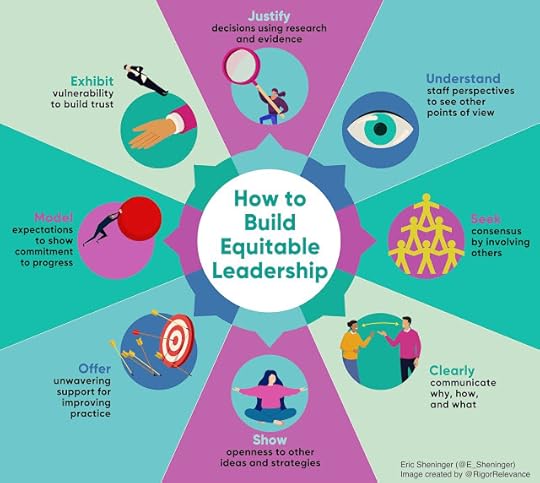
Equitable leadership is all about understanding the needs of those you serve in order to accomplish collective goals. It hinges on providing people with what they need, when and where they need it, to ensure success.
November 21, 2021
Experience Can Be the Best Teacher
The earliest known version of the proverb that serves as the title for this post is attributed to Julius Caesar. You might have noticed that I tweaked it a little bit by replacing “is” with “can” to prove a point in a little bit. While knowledge is undoubtedly essential, the act of using it effectively to implement shared and individual goals is what truly matters. Through experience, we hone our craft and grow. At least, this is what the end goal should be if we are to learn from it to continually get better.
I vividly remember an experience a few years back that radically changed my trajectory as a facilitator of learning. During a breakout session at a large national conference, I had a packed room, which is something most presenters yearn for, and I was no different. Since I was relatively new in this space, I reverted to what I was comfortable with and talked at them for seventy minutes. Quite frankly, my thinking was that this is what they actually wanted at a conference. In my mind, I was doing exceptionally well as only a few people left during the session. When it was all over, I felt pretty good.
Later that evening, I pulled up Twitter to see if there was any chatter about my session. At the time, I wish I hadn’t, as I got skewered by numerous attendees. In a nutshell, I was told that I talked at them the entire time, provided no opportunities for discourse, and didn’t allow for needed reflection on the concepts presented. As much as the critical feedback stung, it became a catalyst for my growth in the professional learning space. I had veered away from the strategies that I had championed as a principal with my staff and needed to make concerted efforts to increase agency across any type of session I facilitated. In this case, experience was the best teacher, but only because I acted on feedback in order to grow.

Experience can be the best teacher when it leads to:
Construction of new knowledgeReflection to improve Openness to and acting on feedback Seeking out different perspectivesRegularly engaging in opportunities to improve Knowing that growth is a never-ending journeyAs the saying goes, experience is the best teacher. This isn’t necessarily true, although it can be if the outcomes listed above are embraced. It is critical that we reflect on our experience and continually grow. Doing something the same way for twenty years doesn’t mean someone is effective. If our practice doesn’t change or improve, then experience doesn’t mean very much.



